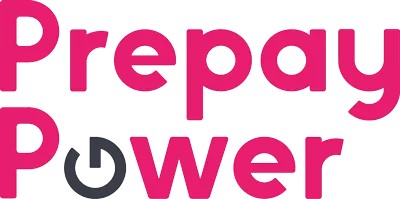
Whether your HR department will consist of one employee or several, when looking to build an HR department from the ground up, the same concepts and laws apply. Building a department dedicated to managing HR functions is one of the most critical decisions a small or medium-sized business may make.
An HR department of any size can function very efficiently if it utilises the right resources and builds a structure and processes to guide the development of the department responsible for just about everything related to employees.
Although managing people information and programs is a core responsibility for HR, the real value of HR is in the specialised knowledge of the law, problem-solving, and strategic planning that HR professionals bring to the role.
A strategic HR department collaborates with management to identify needs, provide direction and necessary documents, training, etc. HR is everyone’s responsibility. A contributor to Forbes.com advises HR professionals to "make every leader an HR leader".
While a degree or higher education is not essential to manage an HR department, there are areas that require specialised knowledge in order to make appropriate recommendations and stay in compliance with applicable regulations.
One of the most important decisions you’ll need to make is determining the type of HR department that the organisation needs. Many of your decisions and plans will be an outgrowth of the decisions you make at this point.
Establish yourself as a professional HR leader and advisor to the C-suite as soon as possible. You need their support and backing in order to be successful and obtain buy-in from employees and management.
The leadership team will definitely have their ideas of what’s needed. But talking to department managers and a representative slice of the workforce will provide further insights about their concerns.
Are there immediate staffing needs? What resources – human, financial, and technological are needed to meet the hiring objectives and needs?

There was a time when businesses were unsure about outsourcing any part of business functions, especially sensitive employee data and functions like payroll.
However, outsourcing has come a long way and it is widely used as a valued addition to HR departments of all sizes. There are several benefits to outsourcing HR task-based work or even specialised but narrow focus functions.
Outsourcing provides built-in backup and redundancy in services. Instead of cross-training everyone on the team, HR professionals can focus on more critical and strategic issues and rely on the professional outsourcing team or HR technology to manage routine tasks.
And outsourcing is not just for large companies. With the right outsourcing plan, small companies can also enjoy more efficiency and cost effectiveness.
Payroll. For obvious reasons, getting payroll right is critical for legal and employee satisfaction reasons. But payroll is largely a routine task that is easily performed by a company that specialises in processing payroll.
Recruiting. A large portion of recruiting is task-based: scheduling calls and interviews, applicant and candidate follow-up, managing applicant tracking, and a variety of other tasks. Outsourcing administrative functions frees recruiters or HR professionals for the more in-depth candidate analysis necessary to strategically staff positions. An ATS, Applicant Tracking System) helps businesses manage their recruitment process efficiently and accurately.
Affirmative Action. Companies with U.S.-based government contracts will need to review requirements to determine if they’re required to comply with AA rules, and likewise European organisations are bound by GDPR regulations,which rely heavily on precise data management and record-keeping of the data of applicants and employees.
Background checking. Background check companies typically have deep knowledge of the laws that govern it and can be a valuable resource for questions about candidate evaluation.
Benefits management. HR and business leadership can determine the benefits that are most appropriate for their organisation, but the scheduled tasks and information management of the process is easily handled by outside companies. In addition to health and welfare benefits like healthcare and insurance, benefits may include employee engagement and rewards programs, employee assistance resources, educational assistance, and many others.
Technology. Managing employee data can quickly become an administrative headache, especially as a business grows or specialises. The use of technology is critical to automating tasks, not only to save time and labor costs, but to ensure consistency and accuracy.
INSERT-CTA
Typical HR data systems:
o HRIS (Human Resource Information System) – a database of all employee information
o ATS – as mentioned above, an ATS uses automation to manage applicant data and may integrate with the HRIS for seamless transitioning from applicant to employee status.
o HCM (Human Capital Management) – managing data is critical but the modern HR department also needs the ability to report and analyze results as well as take HR to the next level to strategize and predict trends and outcomes.
Some of the work of policies and procedures can be outsourced but it’s critical for HR to develop or at least be involved in the creation of all employment policies and procedures that apply to employees.
· Employee handbooks
· Disciplinary actions
· Holidays and other paid time off
· Payroll time-keeping rules
· Performance and behavioral expectations
It’s difficult to legislate every situation that can arise in managing people so it’s best to provide rules that have flexibility rather than rigid parameters that won’t fit all situations.

Culture and community are critical employee concerns that have become significantly more important partially as a result of the pandemic. The Great Resignation and what NPR is calling The Great Renegotiation have solidified employee priorities and they’re demanding company cultures and communities that don’t stop at diversity but include belonging and equity.
Most organisations today are concerned about their culture, but forward-thinking businesses understand that culture is only the first part. Community is the glue that will attract and retain employees and ensure that everyone in the community has equity in the community.
Employees are also increasingly demanding that organisations demonstrate their commitment to societal issues with a Corporate Social Responsibility policy.
HR can provide leadership in the development of all of these programs, but it must be incorporated into all aspects of the organisation.
HR is also responsible for ensuring that employees are properly trained to perform their jobs successfully and to have the resources necessary to advance in their field.
In addition to job-specific training, HR is generally responsible for performance management policies. That includes disciplinary actions, performance evaluations and feedback, and personal and professional development. It’s vital to include HR professionals in the self-development strategy as laws and technology change and HR is often the leader or proponent of new strategies.

After building the foundation of an HR department, it’s critical to focus on strategy and analytics. A frequently repeated adage cautions that, “What doesn’t get measured, doesn’t get done”. How can HR know if programs are successful and cost-effective if the results aren’t measured?
One critical thing to keep in mind is that HR should generally focus on showing the organisation how to do things; not do it for them. The function of the HR department is to lead the organisation and develop people strategies to support the company’s objectives.
With a simple search of “HR resources”, you’ll find a wide variety of articles, news, sample forms, networking, and general information for HR professionals to use.
A great place to start is with one of the most well-known and respected resources - The Society for Human Resource Management, widely known as SHRM. SHRM partners with The Human Resources Certification Institute (HRCI) to provide professional certifications for HR professionals and provides global resources available as well.
At Occupop we also take pride in sharing our knowledge and have put together a suite of helpful guides, eBooks and HR templates for use by HR professionals looking to build a HR function from scratch. Some top resources include:
Templates
There will be numerous challenges in creating and maintaining an HR department, especially if resources are limited. But they don’t have to be overwhelming. The best work that HR can do is to build a strong foundation that is agile enough to withstand workforce upheavals like we’ve seen in the past few years.
Looking forward, finding and keeping talent continues to be highly competitive for businesses of every size. In the midst of The Great Resignation or The Great Rethink, attracting and retaining talent should be a high priority for small and medium-sized companies. Employees have more options than ever and they’re anxious to ensure that they’re in the best work environment possible.
Build innovative recruiting, onboarding, and engagement processes. Take the time to create competitive pay and benefits programs and prioritise employee total well-being over work-life balance.
The importance of the work that HR does is literally in the name – Human Resources. HR deals with virtually every aspect of an employee’s work life so it’s critical to ensure that your HR department is prepared to address every facet of employment and changes that require innovative and rapid response.
INSERT-LINE
Occupop is a beautifully simple recruitment software built for small and medium businesses. We empower our customers to become great at hiring through our smart hiring technology and suite of solutions that almost anyone can use. So whether you're a team of five or fifty, it only takes a few minutes to onboard your team members, set permissions, and start recruiting. If you think Occupop could be a good small business recruitment software solution for you, try it out today with a free 14-day trial.
Step 2: Think about what elements to outsource
Step 3: Define the policies and procedures you need
Step 4: Think about company culture
Step 5: Define your performance management and learning and development
Step 6: Define your HR strategy












